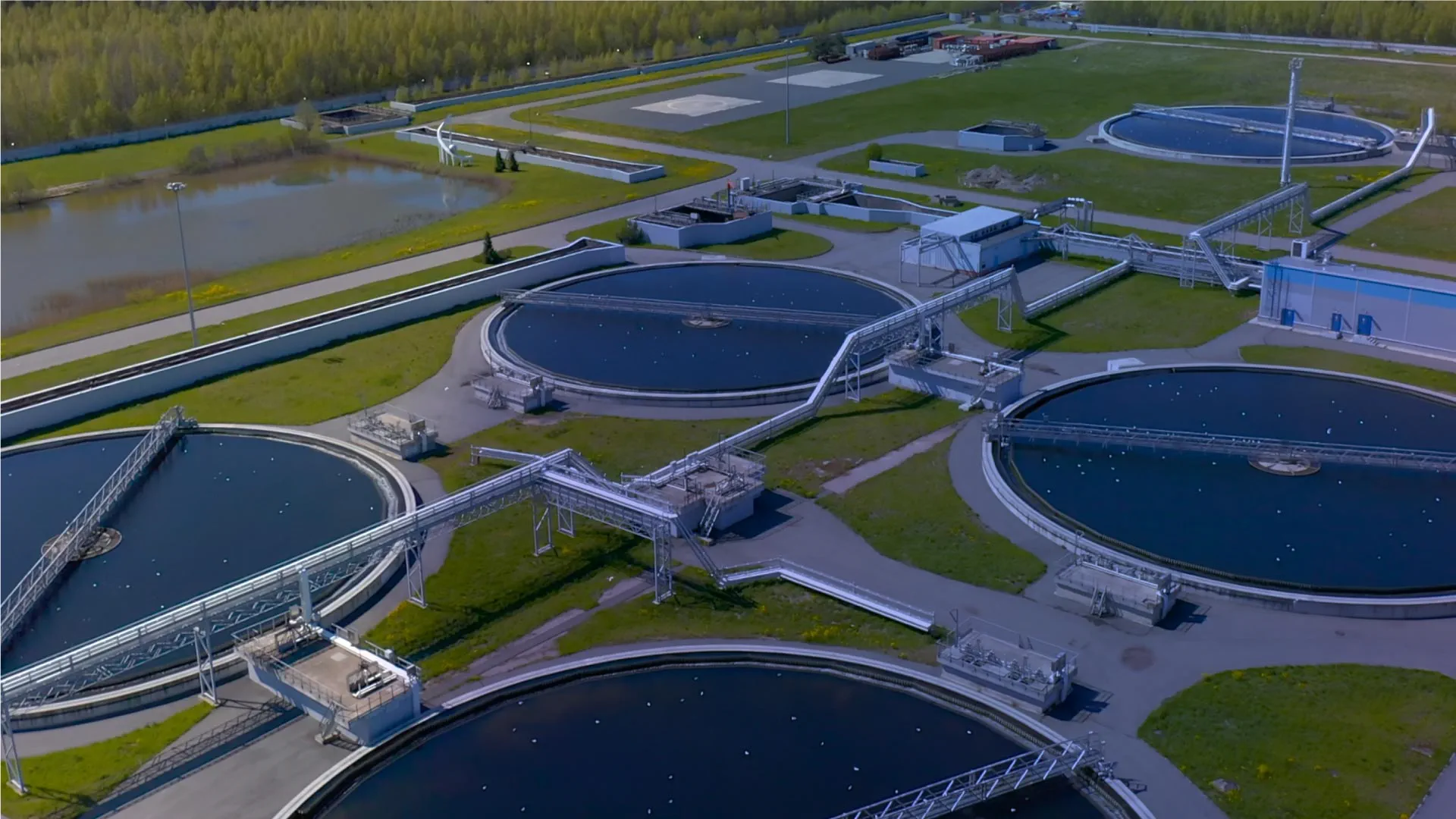"Grounding decisions in data means you can reliably model potential scenarios, giving you awareness of current oversights so you can mitigate them in advance of disruption," writes Gen Chief of Strategy, Mike Rose.
From extreme weather events to pandemics, the last year has cemented the importance of a robust resilience strategy. And highlighted that current safeguards often aren’t comprehensive enough. Consequently, assets as fundamental as water supply have been left vulnerable, jeopardizing safety, continuity of service, and customer perception.
One of the key imperatives now facing any asset intensive organization is how to implement resilience, organization-wide. An elastic organization can easily recover from stress, but resilience means predicting and preparing for it, too.
Proactive contingency planning through evidence-based decision making are key to identifying threats, whether they come from operational deterioration or seismic events.
How can an asset intensive organization build resilience, from CEO to engineer?
The CEO: corporate resilience and recovery that protects reputation
Your role in the culture:
Change initiatives need buy-in from the top, down. Resilience should be the primary focus of your strategy. That means corporate and financial resilience: ensuring stability through minimized operational and commercial disruption. This is important for all stakeholders, not least your customers — and your efforts need to be properly communicated to them all.
Stewardship of long-term asset health is becoming an increasingly pressing organizational imperative. The challenge is meeting this requirement against constrained budgets. Technology is invaluable for managing this, but so are your people. Creating a positive culture of evolution, confidence and trust in technology delivers the buy-in that means change initiatives will be a worthwhile investment. So you need all members of your organization to be on board by helping them see the value of technology. They need to understand how it will improve the health of the asset base, make their lives easier, and make themselves more personally resilient in their role.
Your role in the technology:
Digitalization may have become something of a buzzword, but technology is a key component of corporate resilience. Organizations need to understand threats and hazards across many and varied facets — within their network and environmental — and develop responses based on threat and likelihood. It’s a tall order. But it’s one that digitalization can help to solve. In a world where we continue to have to do more with less, finding efficiency through technology is where you’ll find your competitive advantage.
Investment plans need to be informed by data on asset health, and predictive data which models the impact of disruption, so stakeholders are informed by evidence-based decisions.
While you might not use asset management apps day to day, your strategic decision-making should depend on them. The choices you make — the ones that set or pivot the course of your organization — need to be evidence-based. You need apps that create appropriate, reliable insights for you, and visualize them, so that the outcomes of the interventions and the measures you plan are clear to stakeholders. This level of foresight and clarity has been proven to enable larger funding wins for future improvements.
The most valuable and sustainable apps are process-specific, so your engineers aren’t overwhelmed by technology. One way to minimize the impact of implementing technology is to digitalize processes one at a time. You’ll show them how it makes their lives easier, bringing them along with your vision and empowering them to operationalize it. We created our apps around this exact idea of practical, manageable innovation, and in the UK alone, they’ve been used to support the analysis of resilience threats at over 1,000 facilities, identifying capital efficiencies and increasing regulatory allowances. Rolling out more intensive training, across data skills and cybersecurity to protect it, improves competency at sourcing the insights needed across your organization.
The Ops Director: building resilience with data for quick and confident decision-making
Your role in the culture:
Your quick reaction often relies on subjective opinion and past experience. But resilient asset management operations depend on objective assessment criteria and effective knowledge transfer, gleaned from data. To focus your efforts on improving productivity and operational capacity, data-driven insights are key. Reinforce instinct with tangible reference points.
Resilience is an ongoing activity. The appropriateness and effectiveness of proposed measures should be periodically reviewed and refined, in light of current data, so you can continually reoptimize and address any operational weaknesses. Resilience assessment is critical to understanding how robust your control measures are, visualizing them, and planning improvements. Working with Arcadis, we developed an adaptable resilience framework that guides clients through this exact process — find out how you can use this metric to structure your response and drive improvement over time.
Your role in the technology:
Grounding decisions in data means you can reliably model potential scenarios, giving you awareness of current oversights so you can mitigate them in advance of the disruption
Rather than intermittent intervals of response and mitigation, digitalization and real-time data make the optimization process continuous. You’ll enable quicker enterprise-wide efficiencies by pre-empting service issues, instead of having to run diagnostic testing in the aftermath or peak of a crisis. You’ll be able to serve specific business needs now and in the future, eliminating points of failure through regular updates from asset data.
We’re currently developing a Supply Demand app as part of our AppliedInsight suite, which processes asset and real-time data from within customer organizations and open sources, and uses machine learning to make forecasts. This ensures users have near real-time information supporting their decision making, and is a great example of how new technologies can be key to implementing efficiencies and enhancing resilience on an ongoing basis.
The asset manager: assessing resilience through a single source of truth
Your role in the culture:
If your team’s reporting from disparate spreadsheets or tools, your ability to move from subjective to objective decision-making may be held back. It’s important to have clearly defined measures of effectiveness with relevant performance criteria you can monitor and benchmark. We provide tools that serve as a common, standardized language between your team and superiors, so you have a single, reliable source of truth for effective decision-making.
Your role in the technology:
The more you know about your assets, the more precise and accurate your decisions will be. A resilient portfolio begins with the assets themselves and the number of customers who’ll suffer the consequences if any fail. Plans which prioritize asset lifecycles will support the health of your network and mitigate its vulnerability. Our suite of apps are targeted at specific business problems and asset insights–evaluating performance baselines and risk, and typically, we see savings of between 8% and 17% identified. This way, you won’t need to succumb to the pressure to cut costs with drastic measures. Instead, you’ll be able to find a more manageable optimization approach that reduces downtime, avoids failure, and aligns you with your CEO’s aspirational agenda.
The engineer: the value of good data and filling in the gaps
Your role in the culture:
It’s your responsibility to capture as much relevant data as possible, and in a consistent way with your peers. Champion the move from spreadsheets! It’s critical to future-proofing your organization and its assets — both physical and virtual. You’ll need a database that’s accessible across your organization, so engineers can combine resources through shared datasets.
An effective first step towards better data management often comes in the form of a data quality assessment. We see a lot of uncertainty across our customer base when it comes to the use of data, which is understandable — you’re engineers, not data scientists. But when we set out to build AppliedInsight, we knew a common stumbling block in any organization’s digital journey would be the data quality. That led us to create apps that visualize data, identify gaps, and repair any issues so it’s complete, consistent and ready to use.
Through innovative data analyses and modeling, we identified a range of options from which customers can select a single scenario as the basis of a business plan, giving them a clear understanding of the balance of cost, risk, and performance of the network.
Your role in the technology:
Of course, you can only be as good as your data collection process. Manually consulting disparate spreadsheets loses the efficiency required for the most robust resilience–increasing the time to collect the data and the potential for human error. What’s a better way for engineers to build resilience in asset management? Take it a step at a time.
-
Deal with the data first. Assess what you have and fill gaps.
-
Enhance what you already do. No point ripping and replacing. Identify a process you currently undertake manually, and digitalize it — these small efficiencies add up.
-
Give yourself a break. You’re not trained in data science, and you don’t need to be. Look for products with structured workflows that show you what you need to do and when it needs to be done.
Conclusion
Building resilience across asset-intensive organizations
Everyone has a critical role to play in building a resilient organization. Find out how to overcome issues around sustainability, customer perception, and digitalization within your sector in our long read: ‘Making change predictable’.
Did you find this information useful?
Did you find this information useful?
Thank you for your feedback!

 Back
Back










